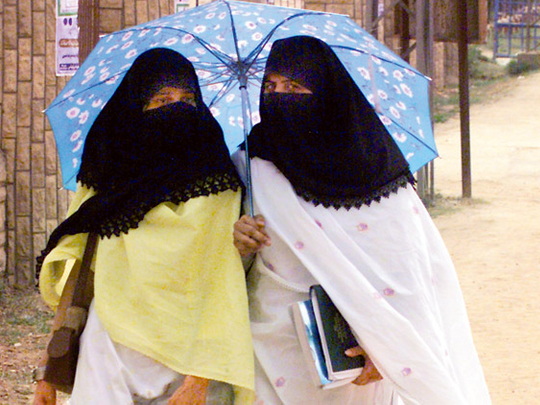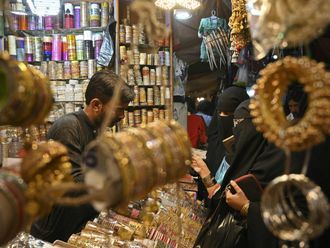
Karachi: In this male dominant society of 180 million people, women constitute more than 50 per cent of the population but hardly make any sizeable part in the literate work force.
Pakistan has for decades grossly under invested in education, and in particular girls’ education. But in the past several years girl students have grossly outnumbere male students at Karachi University, one of the largest state-run university in Pakistan, named after its largest city and the financial capital.
Of up to 26,000 students currently enrolled at the campus over 70 per cent are females, in both the social and natural science faculties.
In a number of faculties the women make even 90 percent of the total class strength in this conservative society where the women are preferred to stay at home partially because of religious reason and mainly patriarchal traditions.
The unique trend is swiftly taking over this conservative and male dominant society without being noticed.
“For about past five years female enrolment at the Karachi varsity has tremendously risen,” said Professor Abid Hasnain, a former president of Karachi University Teachers Society.
The surprising reversal has no single reason behind it. The senior teachers attribute this to a number of factors. “I believe that in our society families and parents prefer to invest in their sons rather than their daughters, that is why aspirant females come tothe public sector universities, which are cheaper,” said Professor Hasnain.The professor was referring to the fact of the mushrooming growth of private universities in the past decade affiliated to reputed foreign universities and offering the latest but expensive faculties which has international job markets.
“Mostly the girls are from the middle and lower middle class which typically prefer their boys in terms of nurturing,” he said.
Economic and social disparities were also the cause behind the trend which is considered ‘negative’ for some.
“This has been a negative trend because I see serious restructuring of the education structure in the country,” said Professor Tauseef Ahmad Khan.
Outlining the reasons behind the trend, he said that females from the middle and lower middle classes were opting for education in traditional faculties in both the major sciences.
“Women prefer to get higher education with intention of getting married in a good family and finding a good groom,” commented Khan, who is the head of Mass Communication Department at the Federal Urdu University.
But the men from the middle and lower classes were opting for business education, computer sciences or going abroad.
Hasnain validates Khan’s version.
“In pure science subjects like chemistry, microbiology, petroleum sciences, females constitute even 95 per cent,” he said.
Pakistan has for decades grossly underinvested in education, and in particular, girls’ education. Education spending is mired at roughly one per cent of its gross domestic produce, and in this environment of resource constraints, girls tend to be short-changed. Overall literacy is only 44 per cent while adult female literacy is less than 30 per cent.












